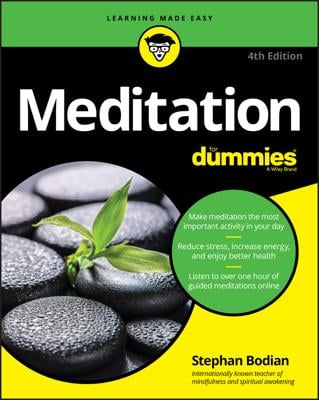As meditation and the emerging field of mind-body medicine remind people— and yogis and sages have been saying for millennia — your body, your mind, and your heart form one seamless and inseparable whole.
When your thoughts keep leaping from worry to worry, your body responds by tightening and tensing, especially in certain key places like the throat, the heart, the solar plexus, and the belly. When the discomfort gets intense enough, you register it as an emotion — fear, perhaps, or anger or sadness.
Because it connects you with your direct experience — and ultimately with a realm of pure being beyond the mind — meditation naturally relaxes your body while it focuses your mind.
As a beginner, though, you may not experience this natural relaxation for days or even weeks. So it can be helpful to practice one of the techniques in the following list before you meditate, especially if you tend to be noticeably tense. (If you’re one of those rare people who are so relaxed that you drift off to sleep at the slightest provocation, you may want to skip this exercise.)
Shower of relaxation: Imagine taking a warm shower. As the water cascades across your body and down your legs, it carries with it all discomfort and distress, leaving you refreshed and invigorated.
Honey treatment: Imagine a mound of warm honey perched on the crown of your head. As it melts, it runs down your face and head and neck, covering your shoulders and chest and arms, and gradually enveloping your whole body down to your toes. Feel the sensuous wave of warm liquid draining away all tension and stress and leaving you thoroughly relaxed and renewed.
Peaceful place: Imagine a safe, protected, peaceful place — perhaps a forest, a meadow, or a sandy beach. Experience the place fully with all your senses. Notice how calm and relaxed you feel here; now allow that feeling to permeate every cell of your body.
Body scan: Beginning with the crown of your head, scan your body from top to bottom. When you come to an area of tension or discomfort, gently allow it to open and soften; then move on.
Relaxation response: Choose a word or brief phrase that has deep spiritual or personal significance for you. Now close your eyes and repeat this sound softly, again and again.
Because the meditation takes at least 15 minutes to complete, you probably won’t do it each time you meditate, but it does show you how to relax your body part by part. By the way, deep relaxation is a great antidote for insomnia — just practice it in bed and then drift off to sleep!

